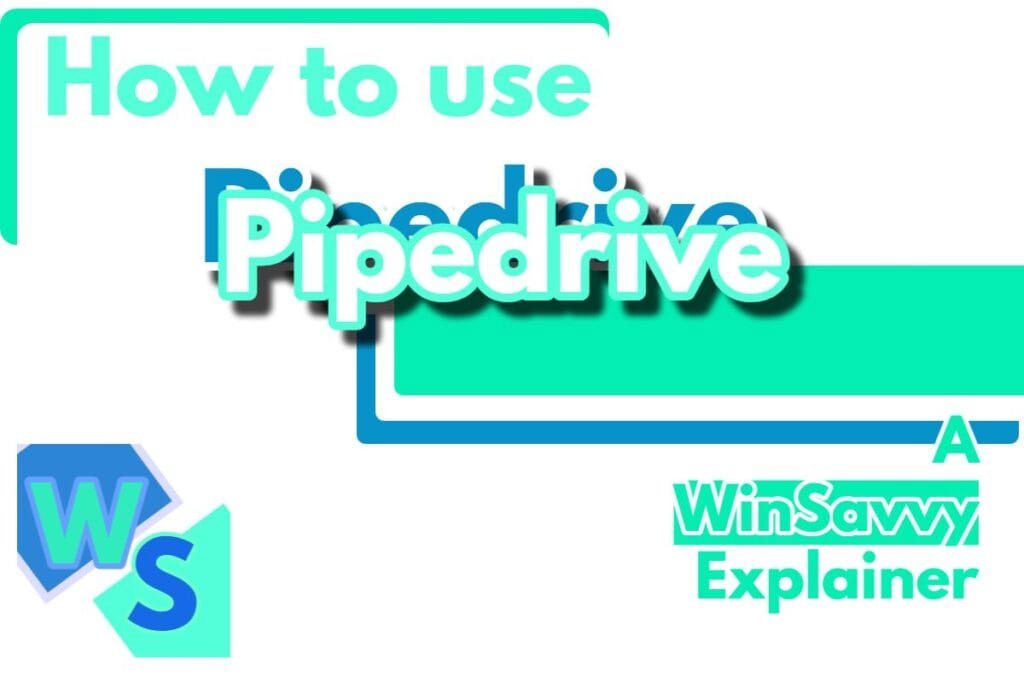Importance of Marketing Plans
Cooking up a marketing plan is like plotting a route to your business’s sweet spot in the market. It’s your survival guide, helping you tackle market challenges while keeping your goals in sight.
Understanding Marketing Plan Objectives
Step one on this journey—set clear, rock-solid marketing goals. These serve as your base camp, tying into your business’s big-picture dreams. The smart way (see what I did there?) is to follow SMART goals: Specific, Measurable, Achievable, Relevant, and Time-bound. You know, goals you can actually track, not some pie-in-the-sky ideas (WVU Marketing Communications Today).
| Objective Type | Description |
|---|---|
| Specific | Nail down exactly what you want to hit. |
| Measurable | Set checkpoints to see how you’re doing. |
| Achievable | Dream big, but stay realistic. |
| Relevant | Make sure your goals jive with the business vision. |
| Time-bound | Set deadlines to keep the hustle going. |
It’s like when you’ve got your secret sauce, your Unique Selling Point (USP), and your brand’s declaration-of-independence statement all worked out (Channel V Media). These bits make sure the competition knows who’s boss and kick your communication game up a notch.
I’m all about doing a deep dive into where you stand. This means checking the lay of the land with some background research, peeking at what the competitors are up to, spotting trends, and seeing what’s been working so far. Doing a SWOT analysis—identifying strengths, weaknesses, opportunities, and threats—is like having X-ray vision (WVU Marketing Communications Today).
Putting together a killer marketing communications plan means including all the good stuff—the timelines, budget breakdowns, creative pieces, and measuring sticks. These parts are your blueprint for sorting out marketing plays, whipping up awesome materials, and keeping tabs on how you’re doing so you can tweak as needed (WVU Marketing Communications Today).
Key Components of a Marketing Plan
Putting together a solid marketing plan isn’t just about throwing darts and hoping they hit the board. It calls for precise components that steer the entire strategy. Important steps include thoroughly analyzing the current situation and nailing down who exactly your audience is.
Situation Analysis
The groundwork of any marketing plan begins with a situation analysis. This involves diving deep into the market, sizing up competitors, and checking out what your business can really do. Typically, this breakdown includes:
- Background: What’s the scoop on your business and how does it stack in the market?
- Competitive Research: Who are the big dogs in your field? What are they good at? Where do they trip up? And how big a slice of the market pie do they have?
- Industry Insights: What trends should you watch out for? What kind of hiccups could throw a wrench in your marketing plans?
- Current Promotions: Time to look at what’s already being done—how are those campaigns performing?
And don’t skip that SWOT Analysis. It’s the secret sauce for spotting your business’s strengths, weak spots, chances to shine, and things that could rain on your parade. Getting a grip on these helps make smarter choices. Need a deeper dive? Check out our marketing plan SWOT analysis.
Target Audience Definition
Zeroing in on your target audience—now that’s a game changer. This step is all about slicing and dicing your audience into smaller groups. Crafting messages that hit home with these folks means more buzz and better bonds.
Some cool ways to break down your audience include:
- Demographics: Think age, gender, wallet size, and schooling.
- Behavior: What makes them tick? Are they brand devotees or bargain hunters?
- Psychographics: Get into their heads. What’s their vibe? What do they value or believe? (Mailchimp)
To nail down who you’re talking to, market research is your best friend. Use surveys, chit-chat in focus groups, or go nerdy with online data to decode what your customers crave (Abmatic AI). Figuring out how they like to hear from you ensures that your message not only sings but hits all the right notes. This understanding is gold when crafting a winning marketing communications plan sample.
Developing Marketing Strategies
Crafting marketing strategies is a must if I want my business to really pop and hit the targets I’ve set. In this section, I’ll dig into what goals and objectives I’m aiming for, and how to set some SMART marketing objectives.
Defining Goals and Objectives
When it comes to my marketing goals, it’s all about pinpointing what I really want to pull off. These objectives are vital in areas like making my brand shine, boosting its presence, getting it positioned just right, and rolling out new stuff (CoSchedule). Here are some goals that might be on my radar:
| Objective | Description |
|---|---|
| Acquire more customers | I aim to boost my customer base from markets I’m already in. |
| Diversify lead sources | I’m looking for a steady stream of potential customers by tapping into different channels. |
| Expand market reach | I’m eyeing new markets, but I want to keep my loyal customers too. |
Having clear goals means I know where to steer my marketing and how best to spend my time and money.
Setting SMART Marketing Objectives
Once I’ve nailed down my marketing goals, SMART objectives make sure they actually happen. SMART means Specific, Measurable, Achievable, Relevant, and Time-bound, and getting these lined up with my goals gives me a solid plan for checking progress.
Here’s the breakdown of what each part means:
| SMART Criteria | Explanation |
|---|---|
| Specific | My objectives should be spot-on and easy to understand. Like, “get a 20% bump in social media engagement.” |
| Measurable | I need ways to see how I’m doing. Things like analytics tools can show if engagement’s going up. |
| Achievable | Objectives gotta be doable and within my reach given my resources. |
| Relevant | Should tie directly to my broader business aims, like beefing up my online game. |
| Time-bound | Setting a deadline, like “by Q3 2024,” keeps me on track and responsible. |
By working SMART objectives into my marketing game plan, I set myself up with a clear path for my efforts. For a deeper dive on setting powerful goals, check out our page on marketing plan objectives and goals.
Implementation of Marketing Tactics
In this piece, you’ll see how I break down the nuts and bolts of rolling out a standout marketing strategy, honing in on timing, budget, and creative flair. Nail these things, and you’ve got yourself a plan that doesn’t just sit on paper but actually gets results.
Timing and Budget Allocation
You’ve got to get your timing and budget on point for your marketing to really hit home. Think of a timing flowchart as your best friend here – it’s the road map for when tasks fall into place. It’s like setting your oven timer so the cake comes out perfect, not burnt or undercooked. Goals and those all-important KPIs let me check if our efforts are hitting the mark (Invoca).
And budgets? Get them sorted at the start. You’ve got to crunch those numbers for everything from ads to content. Here’s a peek at how a budget might look:
| Marketing Tactic | Estimated Cost | Allocated Percentage |
|---|---|---|
| Digital Advertising | $5,000 | 25% |
| Creating Content (Blogs, Videos) | $4,000 | 20% |
| Social Media Buzz | $3,000 | 15% |
| E-Bulletins | $2,500 | 12.5% |
| Research and Insights | $2,500 | 12.5% |
| Events and Fun Stuff | $3,000 | 15% |
I also don’t skip the less obvious stuff. Numbers are great, but sometimes a gut feel based on feedback or seeing changes in customer vibes is where it’s at (Forbes).
Creative Executions
Here’s where all that left-brain planning meets right-brain magic. The art of convincing lies in creating content that turns heads and makes hearts skip. This means crafting stories and images that leave a mark, working across platforms, and saving time and dough in the process (GaggleAmp).
But don’t just go with your gut. Back your creativity with cold hard facts about your audience’s likes, dislikes, and habits. Once you get them, you can deliver exactly what they’ll love. Some plans in action might look like:
- Smashing video stuff for those scrolling socials
- Snazzy infographics to drop knowledge bombs
- Bold promos to catch eyes in any media
By making sure every marketing plan I cook up includes timelines, budgets, creative sparks, and ways to measure success, I’ve got all bases covered (WVU Marketing Communications Today).
Measurement and Evaluation
Taking a look at how well a marketing plan is doing isn’t just a formality—it’s how I figure out if I’m hitting my targets or need to tweak my approach. Tracking the right stuff gives me the info I need to call the shots.
Monitoring Campaign Success
Keeping an eye on my marketing campaigns means getting the basics right. First, I set goals that make sense, pin down the key numbers I’m chasing (like KPIs), and pick dates for when everything needs to be done. It’s kinda like baking bread—gotta have the right ingredients and timing or it won’t rise. I put together a schedule to keep myself on track and use tools that help me really see what’s going on. Dashboards are my go-to for laying everything out—they make my life simpler and give me an easy way to review results and see the big picture.
Here’s a quick cheat sheet of important KPIs for checking in on campaign success:
| KPI | What It Tells Me |
|---|---|
| Customer Retention Rate | If folks are sticking around or bailing. |
| Conversion Rate | How many lookey-loos turn into actual buyers. |
| Engagement Rate | Are they loving—or ignoring—my content? |
| Return on Investment (ROI) | Is the money I’m spending making me more money? |
| Click-Through Rate (CTR) | Are my ads grabbing attention enough to get clicks? |
Keeping tabs on customer retention is a biggie when dealing with campaigns aimed at my current crowd. Personalized messaging through email or apps helps me capitalize on existing data, nudging folks to pick up more stuff. Watching how customers respond, whether they’re buying more or hitting that unsubscribe button, gives me a good read on what’s working.
Adjusting the Marketing Plan
Once I’ve scoured through the data, I often find ways to give my marketing plan a little makeover. I dig into what the numbers are showing me, figure out the hits and misses, and use that info to tweak things like when stuff gets released, how much I’m spending, the types of ads I’m using, and overall planning. Keeping this process rolling is like tuning a guitar—if something’s off, the whole song sounds bad. This ongoing process of making sure my marketing plan is in tip-top shape enhances my results and ensures I’m on the right track.
If you’re looking for more hands-on tips, check out our resources on marketing tactics for small businesses and how to create a marketing plan.
Crafting a Marketing Communications Plan
Rolling up my sleeves and diving into creating a marketing communications plan is like baking a cake—gotta get the ingredients just right. I start by setting some solid goals and figuring out what makes my biz tick like no other.
Defining Clear Goals
Nailing down what I want to get outta this plan is step numero uno. These goals aren’t just some pie-in-the-sky dreams; they’re my game plan that keeps my hustle rotating toward the big picture—improving the biz. We’re talking things like flashing the Bat-Signal to boost awareness, ringing the cash register with more sales, or getting folks chatting about my brand.
Check it out, here’s how I break it down:
| Goal | Description |
|---|---|
| Raise Brand Awareness | Letting people know we’re here and we mean business. |
| Crank Up Sales | Making sure that buy button is getting some serious action. |
| Amps Up Customer Engagement | Got folks talking about us—in a good way, of course. |
I jot these goals down, making sure they’re something I can measure and tweak if needed. Want more deets? I’ve scribbled a whole piece on marketing plan objectives and goals.
Identifying Unique Selling Points
Now, the juicy stuff: What makes my goods or services the bee’s knees? Time to show that off—think of it as strutting my stuff on the business runway. My USPs give folks a reason to pick me over the competition, and I weave these beauties into every ad and post.
Here’s how my USPs might stack up:
- Top-Notch Quality: Delivering products that are a cut above the rest.
- Killer Customer Service: Rolling out the red carpet for every single customer.
- Fresh Features: Offering those gotta-have ’em perks that others just aren’t catching onto.
For keeping it real and on-point, I peek at what the pros are saying, like in the advice over at Channel V Media.
All in all, homing in on my goals and those standout traits keeps me cooking with gas, putting out a marketing comms plan that doesn’t just talk to my audience, but sings to ’em. Whenever I need a hand or a bit of inspiration, resources like the sample marketing plan template can always send me in the right direction.
Audience Targeting in Communications
Let’s get into audience targeting, the secret sauce of any top-notch marketing recipe. It’s all about knowing who you’re talking to and using the right words in the right place to make sure your message hits the jackpot.
Tailoring Messages Effectively
Think of crafting your marketing message like writing a love letter. I’m all about finding what makes my audience tick—what they crave, their quirks, and what keeps them up at night. This means I dive deep into their world, playing detective to come up with a plan that feels like it was made just for them.
Breaking it down, I split my audience into slices based on things like age, their shopping habits, and whether they’re newbies or old pals in the brand world. Each slice gets its own special message, tackling their personal highs and lows. Like when I’m talking to someone new around here, it’s all about introducing the brand’s perks, while repeat visitors might get the scoop on our loyalty program and fresh goodies.
| Audience Segment | Key Characteristics | Tailored Message Focus |
|---|---|---|
| New Customers | Little to no previous interaction | Introduction to brand benefits |
| Repeat Customers | Familiarity with the brand | Loyalty rewards and new products |
| Budget-Conscious | Price-sensitive shoppers | Promotions and discounts |
Selecting Communication Channels
Knowing how my audience likes to chat is a big piece of the puzzle. I need to deliver my message through the channels they’re already tuned into. Figuring this out isn’t just guesswork—it’s about getting to grips with their habits and hangouts (AbmaticAI).
I turn to data like a treasure map, unearthing nuggets of wisdom on where different crowd segments prefer to mingle. Young folks might be all about social media vibes, while the older gang might swear by email for its direct touch or love the feel of a surprise in their mailbox.
| Communication Channel | Audience Suitability | Effectiveness |
|---|---|---|
| Social Media | Younger demographics | High engagement potential |
| Business professionals, Older demographics | Direct communication, Detailed information | |
| Content Marketing | All demographics looking for information | Builds trust and authority |
At the end of the day, it’s all about targeting my audience with the right words and getting cozy in their preferred spots. This is what sets my marketing efforts on the path to success, sparking connections and boosting results. Curious how to whip up your own marketing magic? Check out our sample marketing plan template.





















